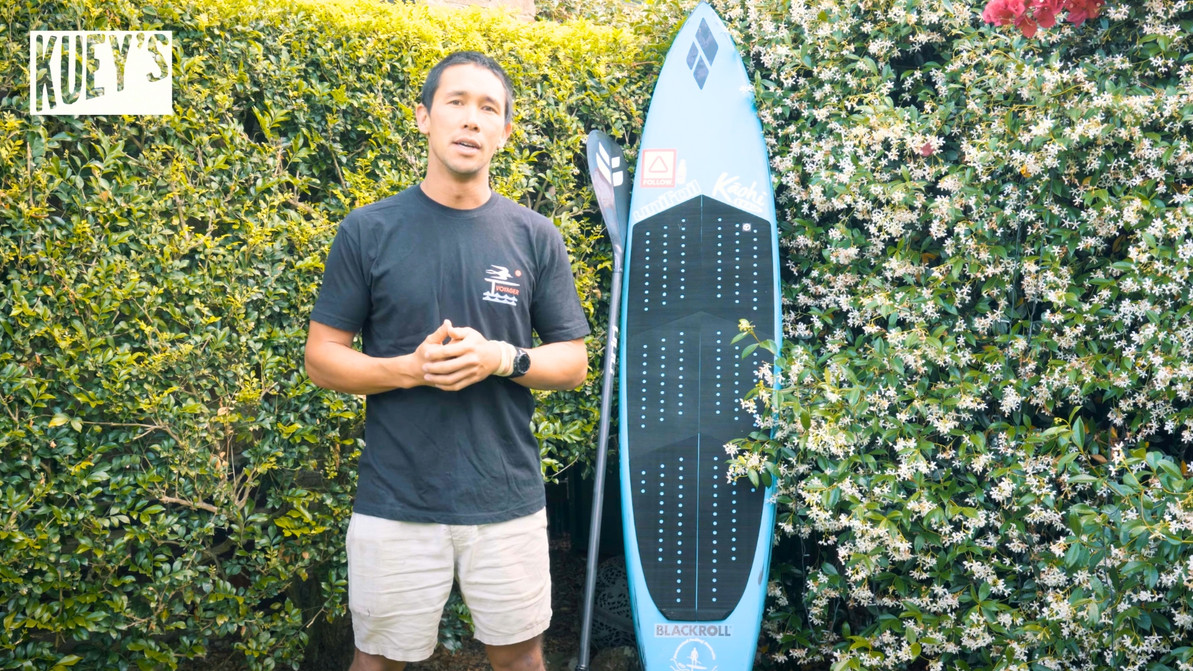Unifoil Adventures | Joshua Ku's Insights into Downwind SUP Foiling
Meet Joshua Ku, a dedicated team rider for Unifoil and a passionate advocate for downwind SUP (stand-up paddleboarding) foiling. Joshua stands out in the world of watersports for his deep love and expertise in this thrilling discipline. Today, he's here to share invaluable insights and tips for those eager to venture into the realm of downwind SUP foiling, especially for beginners with little to no SUP background.
Get ready to embark on an educational journey with Joshua as he guides you through the essentials of choosing the right board, paddle, and safety gear, and teaches the nuances of mastering the SUP downwind technique.
1. Choosing the Right Downwind SUP Foil Board
The first step is selecting a suitable board. Your choice should be influenced by your weight. Josh recommends a board with a lot of volume, ideally in the 7 to 8 ft range. For example, he weighs 77 kilos and uses a 110L board. If you're around 90 kilos, look for something in the 120L to 130L range. Don't shy away from higher literage at the start—it's crucial for balance and stability. Remember, as you progress, you'll likely downsize your board to match your skill level and changes in board designs.
2. Picking the Perfect SUP Foil Paddle
Your paddle is equally important. An adjustable paddle works wonders as it lets you modify the length based on your height and paddling style. A good starting point for paddle height is at or just an inch above your head. This height allows efficient power transfer during your stroke. Also, consider the blade size, which should ideally be between 85 to 110 square inches. Be cautious not to choose a paddle that’s too large, as it might strain your shoulders and affect your technique.
3. Leg Leash or Waist Leash?
Safety is paramount. Josh recommends using a leg rope or a waist leash setup, with the latter being his personal preference. A waist leash keeps the leash off your legs, avoiding interference during pumping. It also provides additional attachment points for essentials like a waterproof phone case.
4. What Size Foil for Downwind SUP Foiling?
Choosing a foil can be complex, but Josh's advice is to start big. He began with a 210 Hyper 2 and has since moved to the 250 Hyper 2, which is fantastic for flat water paddling and technique refinement. Other good starting options are the Progression 200 or larger foils if you're lighter. Remember, you'll likely move to smaller foils as you progress.
5. Tuning Your Equipment
Proper tuning is critical for optimal performance. Josh suggests starting with a large stabilizer, like the 14.5 Progression tail, and a 0° shim. The medium Unifoil fuselage offers a good balance between responsiveness and stability. The most important aspect is positioning the mast correctly for your style and technique. You'll spend lots of time tweaking this as you progress.
6. Mastering the Technique
Before trying to foil, focus on mastering basic paddling. Keep your strokes short and powerful, maintaining your balance. Learn the J-stroke to maintain a straight course. When you’re ready to engage the foil, start with several paddles to build speed before syncing your leg movements with your strokes. Remember, finesse is key—avoid aggressive pumping, as it can stall the foil.
7. Progressing to Bump Riding
Once you're comfortable in flat water, it's time to tackle some bumps, ideally starting in a sheltered bay. Bump reading takes time to learn. Focus on the wind direction and observe patterns in the water. Don’t look back—instead, look around and ahead to anticipate and catch the bumps effectively.
8. The Journey to the Ocean
After mastering bay conditions, you can progress to open-water downwinding. Big water presents more complex conditions with multiple power sources like wind and swell. Remember, like your equipment, your skills will also evolve.
9. Buddy Up
Finally, learn with a friend. It’s safer, more enjoyable, and beneficial for practical reasons like car shuttling. Sharing the learning experience can make the process more rewarding.
Downwind SUP foiling is an exciting, challenging sport. Start with the right equipment, focus on technique, and progress at your own pace. With patience and practice, you'll find yourself gliding over the water in no time.
Recent Posts
-
2025 F-One Rocket Surf Prone, Rocket Wing Crossover, and Rocket Midlength Boards
Mid-length foilboards are rapidly growing in popularity and could soon dominate the market, especi …27th Mar 2025 -
Slingshot One-Lock System Overview - Gimmick or High Performance?
You've probably heard about Slingshot's toolless One-Lock System by now. You get to the beach, you …27th Mar 2025 -
Slingshot One-Lock Tips and Tricks
Slingshot's One-Lock system is an interesting new concept in foil assembly with the goal to elimin …27th Mar 2025









